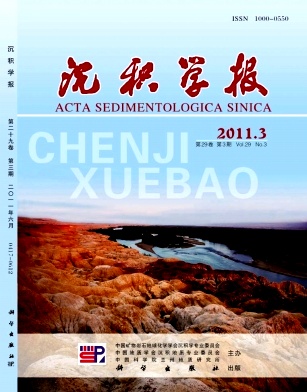Vertical Geochemical Characteristics of Continental Formation Water and Its WaterRock Interaction in the Middle Area of Western Sichuan Depression
- Received Date: 1900-01-01
- Rev Recd Date: 1900-01-01
- Publish Date: 2011-06-10
-
Key words:
- Key words formation water /
- obstructive replaeing zone /
- Lagged zone /
- waterrock interaction /
- western Sichuan Depression
Abstract: Formation water is an important component of pore fluid. The space and time evolution of formation water is controlled by the hydrodynamic field and by fluidrock interaction, respectively, therefore, it is feasible to invert water rock interaction with the geochemical changes in ions and the combination relationships of different ions. In this paper, by systematical analysis of more than 300 formation water data from Upper Triassic Xujiahe Formation and Jurassic Formation in the middle area of West Sichuan Depression, the vertical geochemical variation characteristics of formation water and the corresponding waterrock interaction processes recorded by chemical characteristic was discussed preliminarily
The geochemical characteristics show that the cations of formation water are mainly K+, Na+, Ca2+, Mg2+, Fe2+, Fe3+, and the anions are mainly Cl, SO24, and HCO-3 in the study area. Main type of formation water with supplement of Na2SO4 and NaHCO3type is CaCl2 type.
From Jurassic to Xujiahe Formation in West Sichuan Depression, the formation water can be divided into 2 chemical zones: Obstructive replacing zone and Lagged zone. The zone affected by atmospheric water was only above 530 m.The formation water concentration decreased with depth as a result of largescale dehydration of clay minerals in obstructive replacing zone, but the main reasons for HCO-3 incensement with depth in this zone is addition of CO2 related to maturation of organic matter. The formation water in lagged zone has a significantly higher Ca2+ content than in obstructive replacing zone, which may be caused by albitization of feldspar. In addition, the dissolution of carbonate minerals may also have supplied some Ca2+ to lagged zone. From T3x4 to T3x2 HCO-3 concentration in formation water gradually become smaller, there may be two main reasons for the phenomenon above: First, T3x2 hydrocarbon source rocks had a relatively earlier hydrocarbon generation peak, the amount of CO2 injected into reservoir fluid was relatively smaller compared to T3x4; The other more likely reason was that stronger carbonate mineral dissolution in T3x4 than in T3x2 lead to major changes in HCO-3 concentration which was proved by relatively higher Ca2 + concentration in T3x4.
Na deficit ~ Ca2+ excess relationship showed that most of the Jurassic formation water samples were Na+ excess, indicating that Na+ was from dissolution of sodiumbearing minerals, and Ca2+ excess in formation water was caused by illitization of smectite and carbonate dissolution. Albitization of anorthite in Xujiahe Formation was an important waterrock interaction process, the other diagenetic types occurred in Xujiahe Formation included chloritization, dissolution of carbonate mineral and albite.
| Citation: | SHEN Zhongmin. Vertical Geochemical Characteristics of Continental Formation Water and Its WaterRock Interaction in the Middle Area of Western Sichuan Depression[J]. Acta Sedimentologica Sinica, 2011, 29(3): 495-502. |






 DownLoad:
DownLoad: